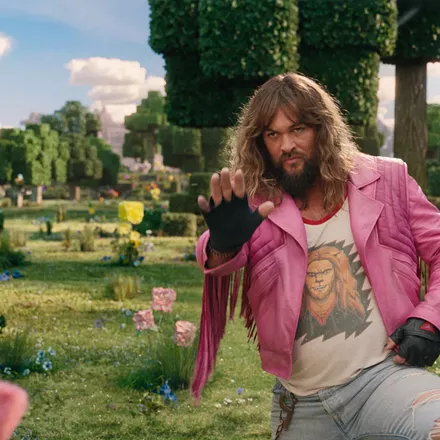Feature movie review: QUEER
An exploration of 1950s homosexuality gets lost in too much weirdness.
By Scott Renshaw @scottrenshawI think—and I'm wise enough to use that qualifier—that I know what director Luca Guadagnino and screenwriter Justin Kuritzkes were aiming for in their adaptation of William S. Burroughs' semi-autobiographical novella Queer. It feels somewhat evident from the outset, as Sinéad O'Connor's cover version of Nirvana's "All Apologies" plays over the opening credits, with its well-known lyric "everyone is gay." As we see the life of Burroughs' counterpart William Lee (Daniel Craig) play out on screen, drinking and looking for connection among other gay American expatriates in 1950s Mexico, the soundtrack features other anachronistic songs—by New Order, by Prince, and even another Nirvana tune—evoking a time in which someone like Lee would not feel so emotionally isolated by his sexual orientation. It becomes kind of a melancholy suggestion that while eventually It Gets Better™ in a societal sense, Lee was just born at the wrong time to benefit from it.
It's an interesting idea. I get it. And Guadagnino's way of exploring it just doesn't work at all.
There are some things about Guadagnino's filmography and his style that would seem to make him an ideal candidate for adapting Burroughs. From the surrealist maximalism of his Suspiria remake to the observational gay romance of Call Me By Your Name, he's got a unique bag of filmmaking tricks. The kind of sharp editing rhythms he favors are put to solid use here, like in a scene where quick cuts to someone removing his shoes while on Lee's bed provides the hint to him that things are about to get physical. And Guadagnino's also willing to let scenes play out in actors' faces, allowing Craig to convey Lee's frustration and confusion over whether Eugene Allerton (Drew Starkey), the man with whom he has become infatuated, is actually gay as well.
But Queer has lots of other places it wants to go, both thematically and in terms of the geographical setting, and does so in a way that gets more baffling and frustrating by the minute. Guadagnino leans into hallucinatory dream sequences, allowing for a lot of weird imagery—a legless naked woman floating above a table; a centipede pendant coming to life—that tends to distract from the emotional core of Lee's relationship with Allerton. Scenes start to drag on without nearly enough payoff, like a visit to a doctor as Lee goes through heroin withdrawals. For an adaptation of a novella, Queer sure feels full of padding.
Things go most clearly off the rails once the action shifts to the Amazon jungle, and Lee's quest to experience the psychoactive plant yagé (better known to us as ayahuasca). In principle, its inclusion makes sense, as it connects to Lee's desire for a kind of communication that doesn't require language—being able to know, for example, if another man wants to be with him without having to take the emotional or physical risk of saying it out loud. Instead, that chapter turns into a showcase for Lesley Manville to go over the top as an American researcher in the Amazon, as well as for an extended sequence of Lee and Allerton's shared ayahuasca trip that finds them literally vomiting their hearts out before engaging in a kind of modern dance where they eventually inhabit one another's skins. It's ... a lot.
The damned shame of it is, you keep getting glimpses of the more delicate character study Queer might have been. There's a heartbreaking moment where we see Lee spooning Allerton while in the middle of his heroin withdrawals, noticing that Allerton has placed his own leg over Lee's—a gesture of tenderness that stays with him until his actual deathbed. It's a snapshot of how precious and rare such moments could be for a 1950s gay man, but Guadagnino becomes too enamored with mimicking the way David Cronenberg approached Burroughs' Naked Lunch. While there may have been a point where the filmmakers wanted to signal that It Gets Better™, the result is a movie that just gets sweatier.
More by Scott Renshaw
-
Boulder Weekly Film Critic Talks About Sundance Move to Colorado
Discussing the logistics, finances and politics of the festival's relocation
- Apr 3, 2025
-
Film Reviews: New Releases for April 4
A Minecraft Movie, The Friend, Hell of a Summer, Bob Trevino Likes It, Freaky Tales
- Apr 3, 2025
-
April David Lynch Film Festival at Broadway Centre Cinemas
The Elephant Man, Eraserhead, Mulholland Dr., Blue Velvet and more to celebrate the late director.
- Apr 2, 2025
- More »
Latest in Film Reviews
Readers also liked…
-
Sundance 2025 wrap-up plus February special screenings
Uncertainty about the future location shifts focus away from the movies
- Feb 5, 2025










